Why revoice violins?
Between 1860 and 1914, an estimated seven million violins were made in European workshops for the burgeoning American market. These “trade” violins make up the majority of instruments found in basements and attics across the United States today. Most bear a facsimile label of Stradivarius, Amati, Guarneri or any of a dozen other well-known early European makers. These violins are not fakes – they are simply (and sometimes roughly) patterned after the output of these legendary luthiers.
Most of these violins came from German and French factories and their workmanship and materials range from junky to superb. Most importantly for players today, all these fiddles (even the cheap ones) were made with old-growth spruce – wood that is extremely hard to find now. And, for reasons related to mass production, many of these instruments were constructed with overly thick tops and backs. That’s good news. It is common for the best candidates to be “revoiced” by removing the tops, regraduating them to proper sonic specifications and installing new bass bars. If necessary, the ribs (sides) and back plate are also regraduated. When done correctly, these suped-up violins deliver a louder, deeper and more complex sound.
Here are some photos of a recent revoicing at Greenway Violins:
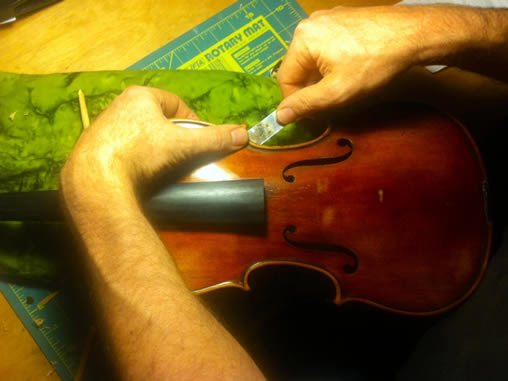
Removing the top (very carefully!)
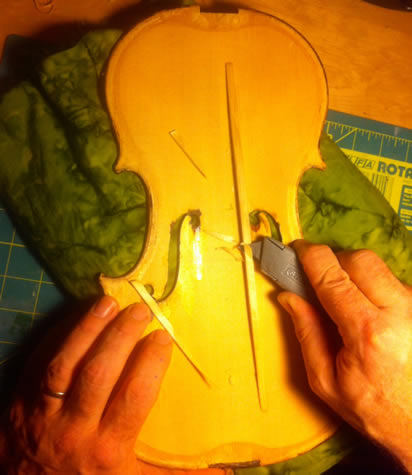
Stripping out the old bass bar.
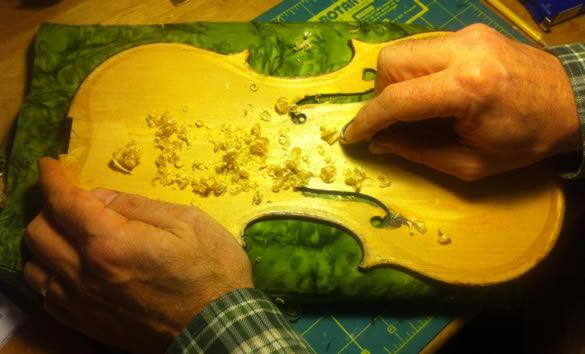
Regraduating the top plate.
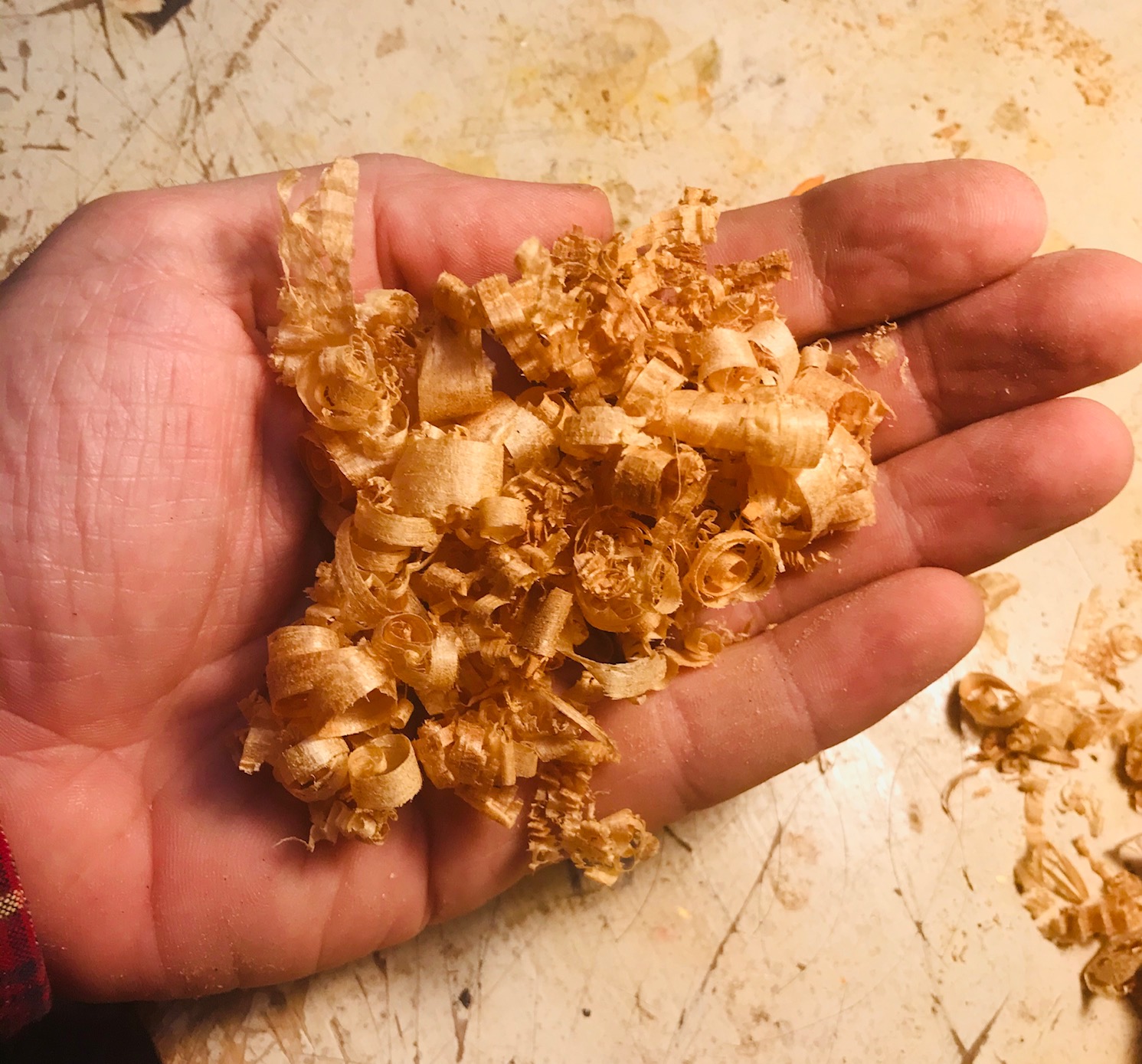
A handful of removed wood.
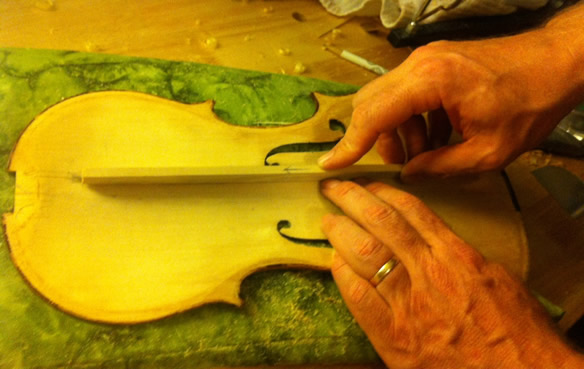
Fitting the new bass bar.
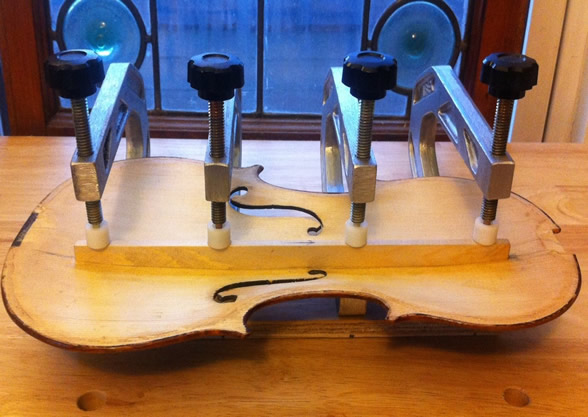
Clamping the bass bar using (cow) hide glue.
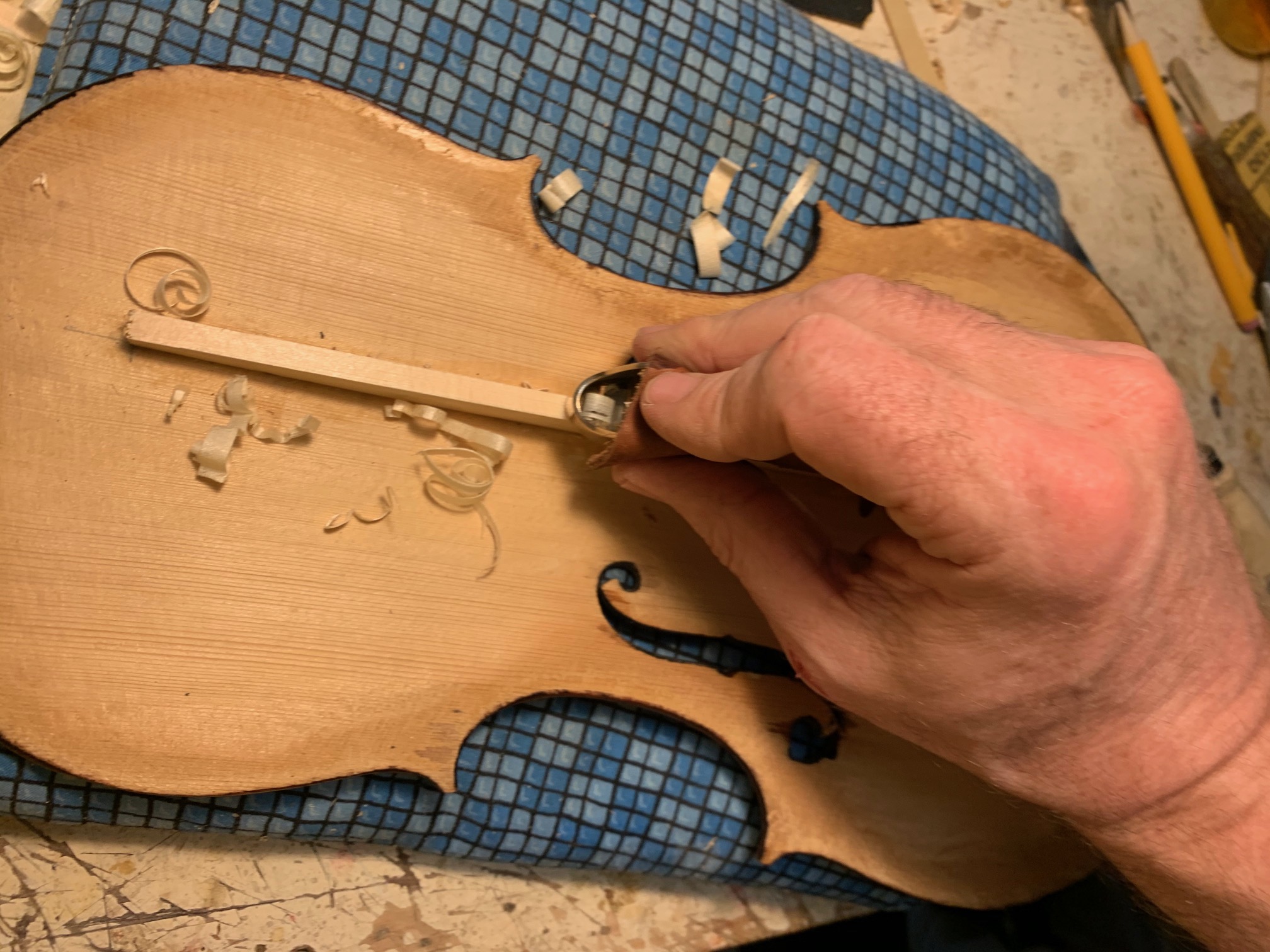
Shaping the new bass bar.
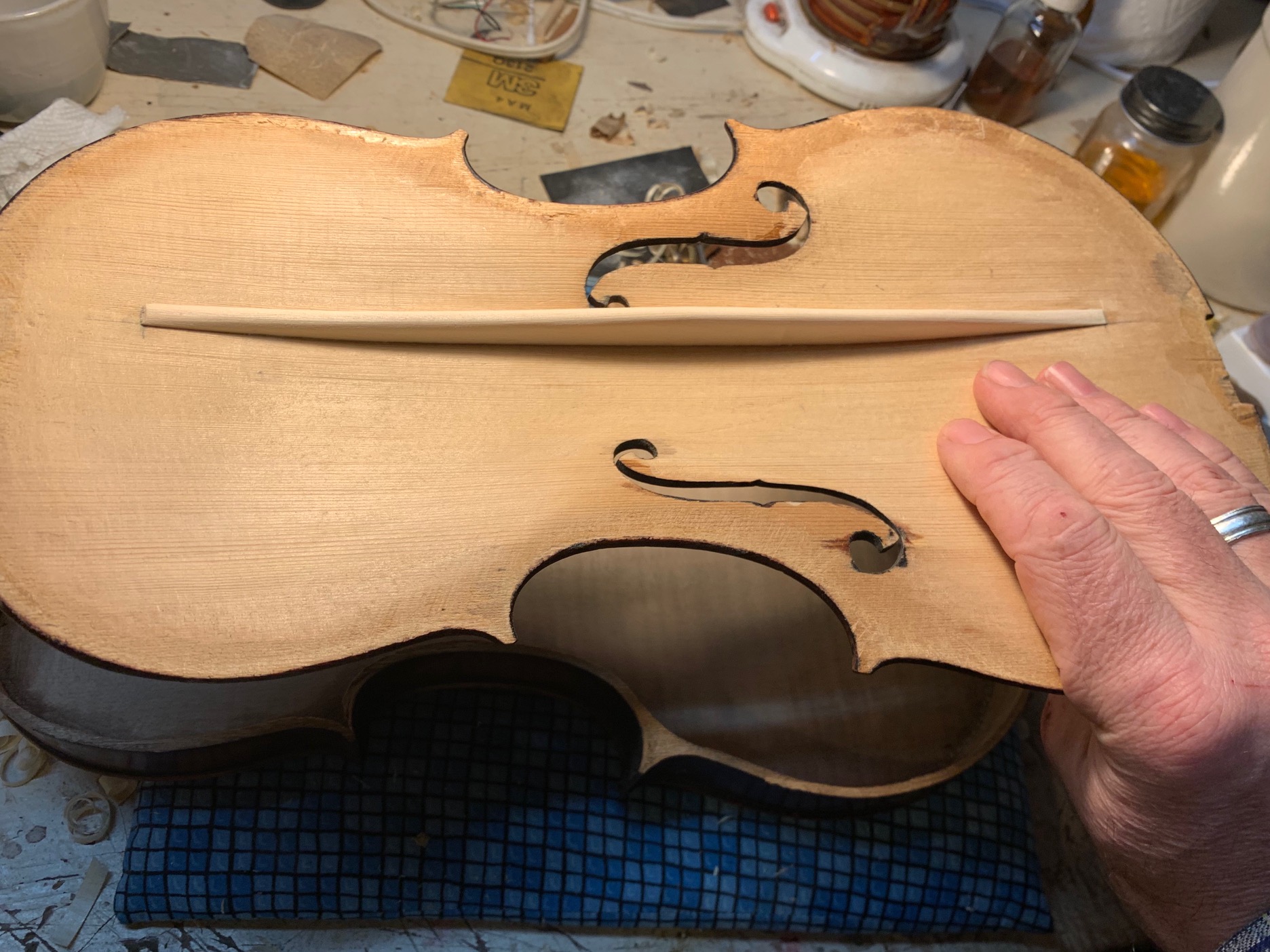
Finished bass bar
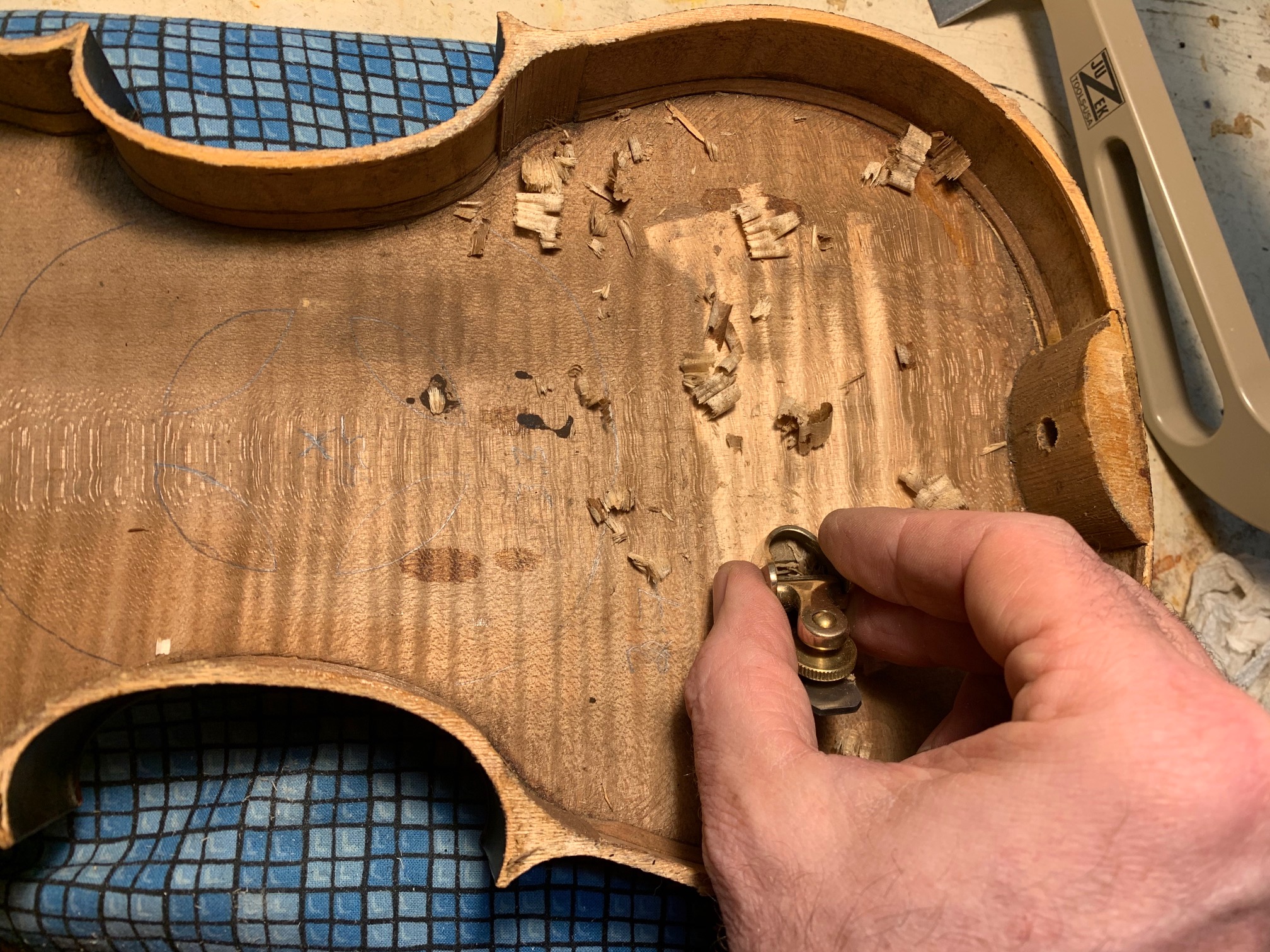
Regraduating back plate.
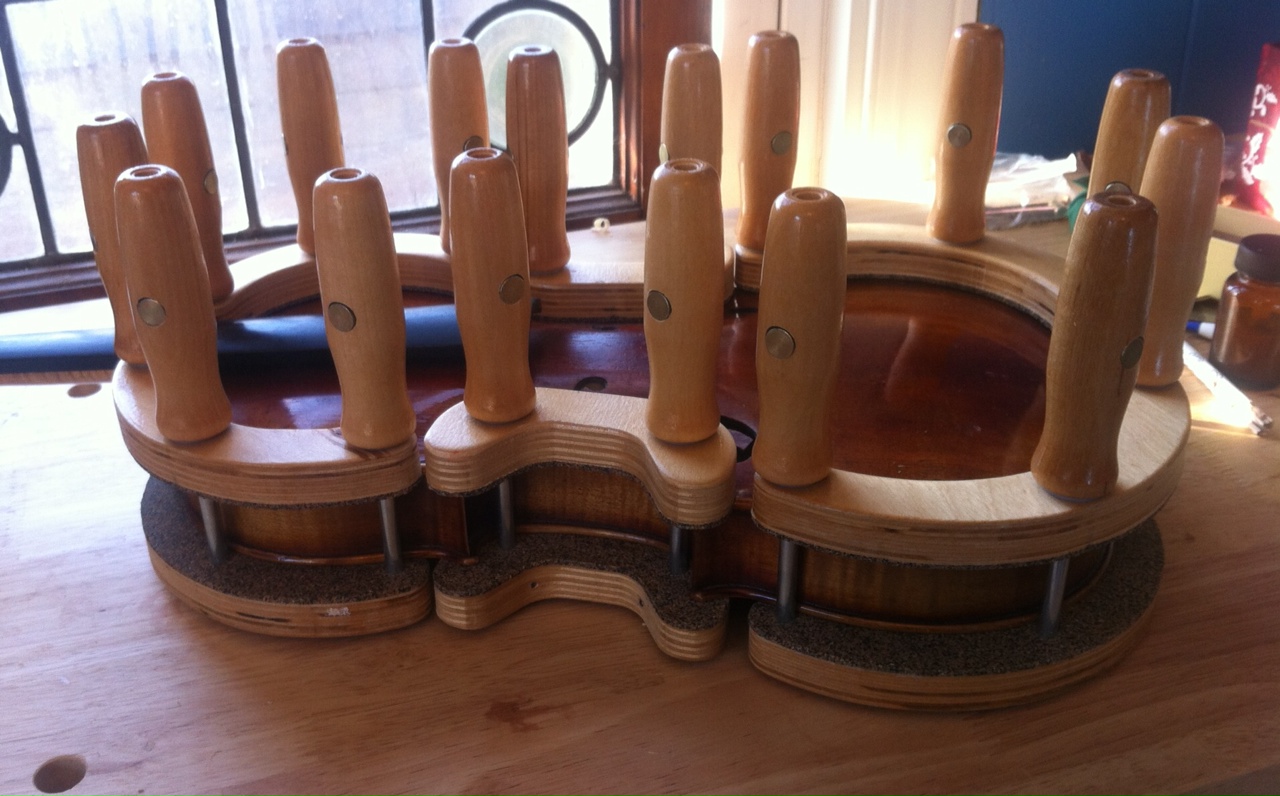
Gluing the top back onto the body.

Ready to play!
